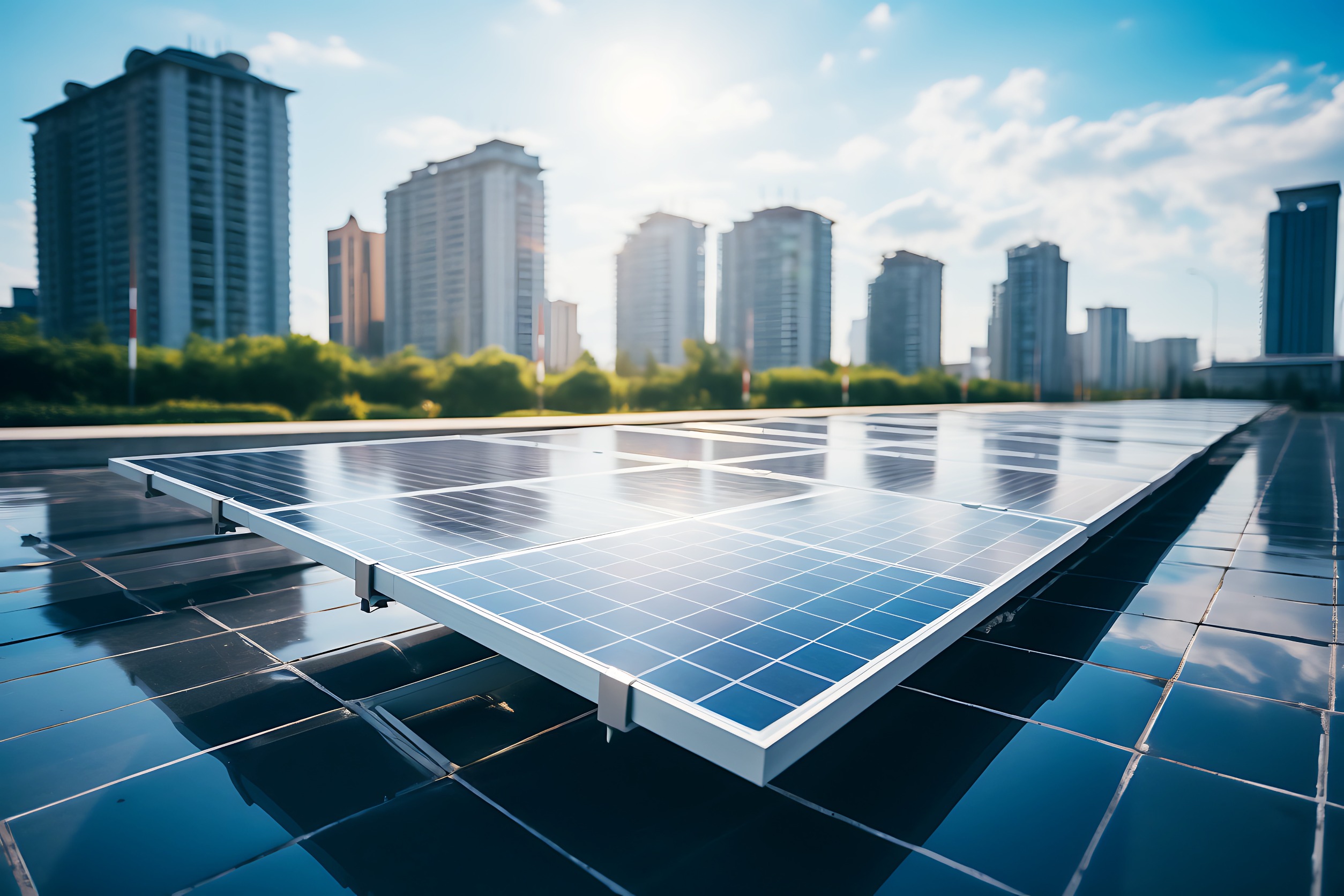Are you considering going solar? With increasing environmental regulations and rising electricity costs, now is a great time to consider utilizing California’s generous solar incentives.
Investing in rooftop Solar Panel installation may sound daunting at first, but with the right knowledge of options and program specifics, you’ll be able to take advantage of all that renewable energy has to offer!
In this guide, we will provide an overview of California’s best incentives for making the switch to clean solar energy and look at what basics you need to know when comparing panels —together with estimated costs—so that you can decide if going solar is the viable option for your budget.
Overview of California Solar Incentives, Tax Credits and Rebates

California offers several solar incentives to help reduce the overall cost of your solar panel system. The most notable incentive is the Federal Solar Tax Credit, also known as the Investment Tax Credit (ITC), which allows you to deduct 30% of the cost of installing a solar energy system from your federal taxes.
In addition to the ITC, California has the California Solar Initiative (CSI) Thermal Program that offers cash rebates to people who install solar water heating systems. Furthermore, with the Net Energy Metering (NEM) policy, homeowners with solar panels can get bill credits for the excess electricity they generate and send back to the grid.
Lastly, property owners in certain cities can take advantage of Property Assessed Clean Energy (PACE) financing, which allows them to repay their solar system’s cost over time through property taxes. These incentives make it much more affordable for California residents to switch to renewable solar energy.
How to Take Advantage of Solar Incentives in California
To fully leverage the solar incentives in California, follow these steps:
- Research and Understand Your Options: Begin by understanding the various incentives available in California. It includes the Federal Solar Tax Credit, the California Solar Initiative (CSI) Thermal Program, Net Energy Metering (NEM), and Property Assessed Clean Energy (PACE) financing.
- Evaluate Your Energy Consumption: Analyze your current electricity usage to determine your potential savings from a solar system. It will help you calculate the return on your solar investment.
- Choose a Qualified Solar Installer: Look for a solar installation company that is familiar with California’s solar incentives. The installer should be able to guide you through the process and maximize your benefits.
- Install a Solar Water Heating System: The CSI Thermal Program offers cash rebates for solar water heating system installations. Consider this option to increase your savings.
- Apply for the Federal Solar Tax Credit: After installing your solar panel system, apply for the Federal Solar Tax Credit to get a 30% tax deduction on your federal taxes.
- Connect Your Solar System to the Grid: To benefit from the NEM policy, ensure your solar system is connected to the electricity grid. It will enable you to earn credits for any excess electricity you produce.
- Consider PACE Financing: If you’re located in a city that offers PACE financing, consider this option to repay your solar system’s cost over time through your property taxes.
Remember, harnessing these incentives effectively can significantly reduce the cost of your solar installation and accelerate the transition to renewable energy.
Tips for Maximizing Your Solar Investment

- Monitor Your Solar System Performance: Regularly check your system’s performance to ensure it’s operating optimally. Most solar panels come with monitoring software to help you track your system’s output.
- Regular Maintenance: Although solar panels require minimal maintenance, periodic cleaning, and professional inspections can enhance their performance and lifespan.
- Install a Solar Battery Storage System: By storing excess solar power in a battery, you can use it during nighttime or cloudy days, thus ensuring a consistent energy supply and further reducing your reliance on the grid.
- Optimize Energy Consumption: Try to use energy-intensive appliances during the day when your solar system is producing the most electricity. It can help you maximize your savings.
- Stay Informed About Policy Changes: Government policies and incentives can change. Stay updated about any changes to ensure you’re still maximizing your solar investment.
Remember, making the most of your solar investment involves strategic decisions and actions—before, during, and after solar panel installation.
Calculating the Cost of Solar Panels and Equipment
To estimate the cost of solar panels and associated equipment, you’ll need to consider several factors.
- Size of Solar Panel System: This is typically the most significant cost factor. The size of the system you need will depend on your electricity usage, which can be determined from your utility bills.
- Cost of Solar Panels: The price of solar panels can vary based on their type (monocrystalline, polycrystalline, or thin-film) and efficiency.
- Cost of Inverter: The inverter, which converts direct current (DC) generated by solar panels into alternating current (AC) that can be used by household appliances, is another significant cost. There are various types of inverters, each with different price points.
- Cost of Mounting Equipment: Mounting equipment, which secures the panels to your roof, is another cost to consider. The price will vary depending on the type and quality of the mounting system.
- Installation Costs: This includes labor and the cost to connect the system to the grid. It can vary depending on the complexity of the installation, local regulations, and the installer’s rates.
- Additional Equipment: Depending on your solar system setup, you might also need to consider the cost of a battery storage system, charge controller, or additional safety equipment.
- Maintenance and Operation Costs: While these are not upfront costs, considering them will give you a complete picture of the total cost over the lifespan of the system. It includes periodic cleaning, professional inspections, and potential repair costs.
Remember, while the upfront cost may seem high, solar panel systems offer significant savings in the long run. Plus, with the various incentives available in California, the net cost can be substantially lower.
Obtaining the Necessary Permits for Installing Solar Panels in California
Before installing a solar panel system in California, you must obtain the necessary permits. It is a crucial step to ensure that your solar installation is up to code, safe, and legal. Here are the steps to follow:
- Building Permit: The first step in the solar panel installation process is obtaining a building permit from your local city or county’s building department. This permit ensures your solar panel system adheres to local building codes and safety regulations.
- Electrical Permit: Alongside the building permit, you’ll also need an electrical permit. It allows for the inspection of the solar panel system’s electrical components, ensuring they meet local and national electrical codes.
- Solar Access Rights: In some cases, you might need to secure solar access rights. These rights protect your access to sunlight from potential obstructions like trees or future constructions.
- HOA Approval: If you live in a community governed by a Homeowner Association (HOA), you may need to get their approval before installing your solar panel system. California’s Solar Rights Act restricts HOAs from denying such installations, but they can impose reasonable restrictions.
- Interconnection Agreement: After your solar system is installed, you need to sign an interconnection agreement with your utility company. This agreement allows you to connect your solar system to the grid and benefit from Net Energy Metering (NEM).
Remember, different cities or counties may have slightly different permit requirements or processes, so it’s essential to check with your local building department or your solar installer.
Navigating the seemingly complex permit process for solar installations becomes straightforward with top-rated solar companies. Their expertise in local laws and regulations ensures a smooth journey, making the experience hassle-free for clients. Finding the Right Contractor to Install Your Home’s Solar System
Finding the Right Contractor to Install Your Home’s Solar System

Selecting the right contractor for your home’s solar system installation is a critical decision. Here are a few tips to help you make the right choice:
- Certifications and Licenses: Ensure your contractor is certified and licensed to perform solar installations. In California, they should be licensed by the Contractors State License Board (CSLB) and ideally have a certification from the North American Board of Certified Energy Practitioners (NABCEP).
- Experience and Expertise: Consider the contractor’s experience and expertise in solar installations. Ask about the number of installations they have completed, and if possible, ask for references or reviews from previous customers.
- Quality of Equipment: The contractor should use high-quality solar panels, inverters, and mounting equipment from reputable manufacturers. They should be able to explain the advantages and drawbacks of the different types of equipment.
- Detailed Proposal: The contractor should provide a detailed proposal outlining the cost, estimated energy savings, system size, and equipment brand and type. Make sure they also include the timeline for the project and warranties offered.
- Knowledge of Incentives and Permits: Your contractor should have comprehensive knowledge of local and federal solar incentives. They should guide you on how to apply for these incentives and assist with the permitting process.
- Maintenance and Support: Check whether the contractor provides post-installation maintenance and support. It includes monitoring system performance and offering repair services if necessary.
Remember, hiring the right contractor is essential for maximizing your solar investment and ensuring a smooth and successful installation process.
In Conclusion
Transitioning to solar energy in California involves a series of strategic decisions and actions, including understanding the various incentives, choosing the right equipment, selecting a qualified installer, and maintaining your system.
By factoring in these aspects, you can significantly reduce your carbon footprint, enjoy substantial savings on your energy bills, and contribute to a more sustainable environment.
Remember, the initial investment may seem substantial, but the long-term benefits of solar energy far outweigh the initial costs.
About Us
Solar is the future, and if you have not yet switched to solar energy for your home, now is the time to do so! If you are looking for a reliable solar installation company in California look no further than Vibe Solar. We are a team of professionals dedicated to doing our bit to save the planet and help our clients towards sustainable living. We offer both residential and commercial solar panels and installation services.
Our products are designed with high-grade materials that meet industry standards, we also provide warranties for our products and services. So, what are you waiting for–get your free solar estimate today!
If you have any questions or want to know more about what we do, you can reach us at 661.485.5000 or fill out our contact form.


